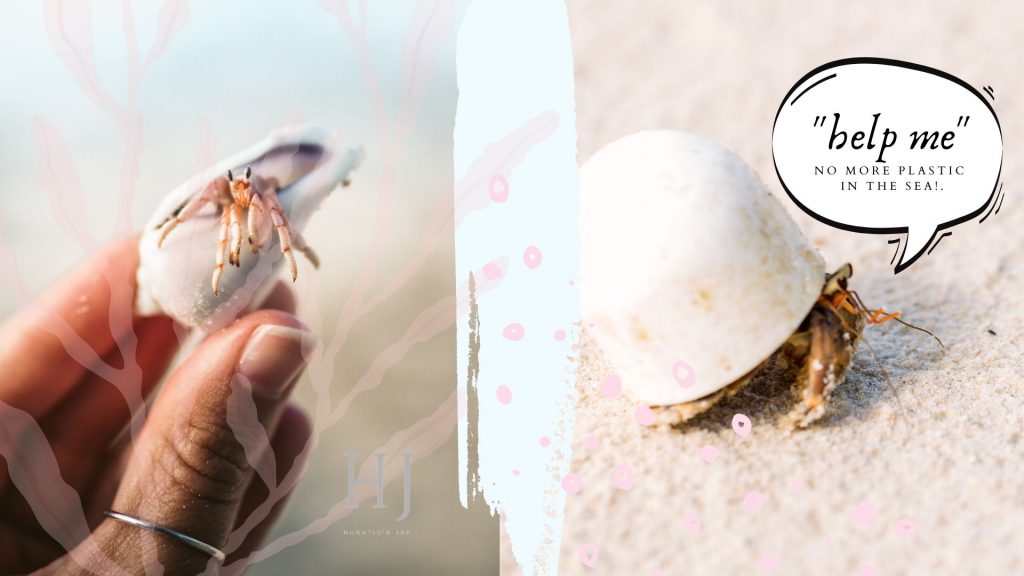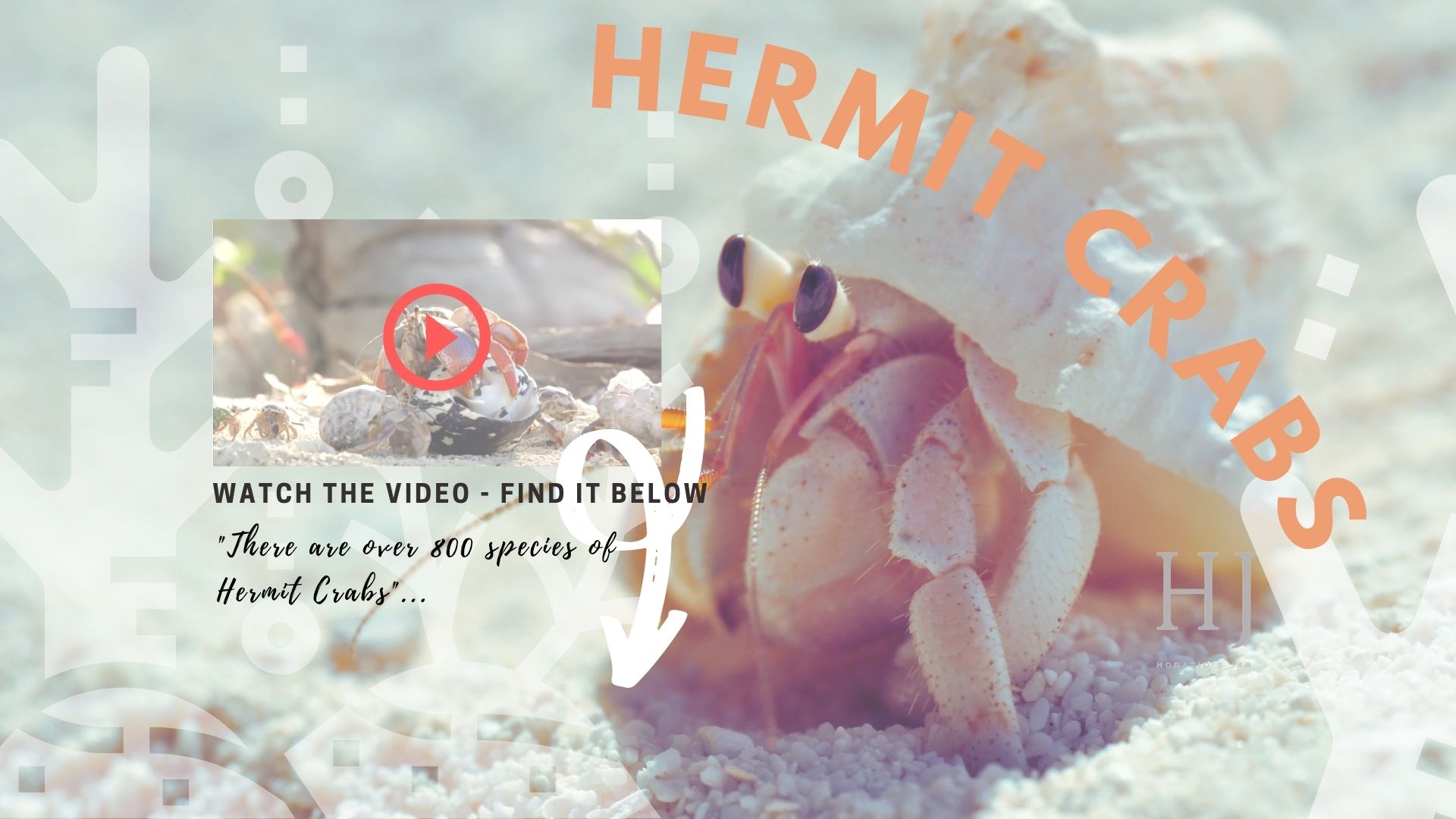Published by: Digital Schools
Hermit Crabs – No More Plastic In the Sea
They may look like crabs, but are they?
Hermit crabs are not really like other crabs, sure they look similar, but there are some pretty big differences. Hermit crabs don’t have a hard outer shell covering their whole body. Only the front end has the hard shell of a crustacean, the other half of their body, which is curled inside an acquired home, is soft, squishy and curled to one side.
Hermit Crabs aren’t really hermits at all, and they aren’t exactly crabs either?. Rather than living in solidarity and hiding out in the dark corners of a lonely rock pool, Hermit crabs are incredibly social. They live together in large family groups, swapping shells, sharing tidal pools and fighting over food.

Dressed to Impress
Dressed to impress, hermit crabs share their spacious abode with a garden of friends. Stacked atop their spiralled homes are sea anemones, strange collectables, shells and sometimes human recyclables.
To protect their bodies from the hot sun, hungry birds and octopus, the hermit crab needs to find shelter in the discarded shells of sea snails. Hermit Crabs don’t grow their own shells and need to find new ones as they grow bigger.
If there aren’t enough shells to go around, the hermit crab will find an alternative, and sometimes that could mean recycling human rubbish and popping on a tin can or a plastic cup until a better housing alternative is available.
It may look cute and quirky to see a little crab wearing human garbage, but truthfully the trash we put in the oceans impacts the crabs negatively. Plastics in the sea and everywhere for that matter increase ocean acidification, which means that the ocean becomes toxic, and animals that grow shells like crabs and sea snails, cuttlefish and lobster, won’t be able to anymore and will die.
Hermit crabs choose alternative options with fewer shells available, and this could be anything from a plastic cup to a tin can. Plastic micro-particles in seawater interfere with the hermit’s ability to make decisions when choosing the right sized shell and changes their motor function, meaning they can’t move properly anymore. It’s as if they have a brain injury.
It means they can die from starvation. They can’t move their bodies properly and get eaten by predators because they don’t have the right shell to protect them.
Say ‘no’ to Plastics
Hermit crabs are sensitive social little beings. They live a really long time, as long as 40 years in the wild. There are over 800 species of hermit crab, and they live in coastal areas across the world.
To make sure these cute little guys stick around on our gorgeous planet earth we need to make better choices when it comes to what we buy and how it is packaged.
Plastics are forever, the more we create, the more that ends up in our oceans, our drinking water and our food.
Choose products in the supermarket that have bio-degradable packets, use garbage bags that are compost friendly, and do not buy water in a plastic bottle.
Just a few small changes make a world of good!
![]()
Link and Resources
More on Ocean Acidification
https://oceanservice.noaa.gov/facts/acidification.html
What is a Hermit Crab
https://www.nationalgeographic.com/animals/invertebrates/facts/hermit-crabs
The Great Pacific Garbage Patch.
https://www.nationalgeographic.org/encyclopedia/great-pacific-garbage-patch/
![]()
Guest Contributor: Emily Rack
Business Name: Horatio’s Jar
Publisher: Digital Schools
Emily Rack is a qualified yoga teacher, meditation instructor, freelance writer and visual content creator. She is the head of the content production, publication and editing for Upschool+ Guest Contributors. Emily provides mindfulness and wellbeing workshops, immersive experiences, classes and events for the whole community and is an experienced event designer, teacher and performing artist.
——-
PUBLISHER’S DISCLAIMER: The publisher of this blog post (Digital Schools PTY LTD) works in partnership with the school as a 3rd party provider to help build and maintain the school website. Digital Schools sources a range of experts who provide products and/or services to educational institutions and we work with them to produce and publish topical information in the form of blog posts that we think may be relevant, interesting or topical to families within the community. The views, opinions and content listed in this blog post are that of the guest contributor and/or publisher (Digital Schools). It should be noted that whilst the publisher and guest contributors are acting with the best intentions and in the best interests of the school and their community to provide helpful or interesting information, sometimes the content may not necessarily reflect the views of the school.
The information in this blog post is not meant to be used, nor should it be used, to diagnose or treat any medical condition. For diagnosis or treatment of any medical problem, consult your own physician. The school and the publisher of this blog post are not responsible for any person reading or following the information in this article who may experience adverse effects.
Any references to external websites or sources are provided for informational purposes only and do not constitute endorsement by the school or publisher in any way and the publisher and/or school cannot guarantee accuracy of information listed.
If you have feedback on any content on this platform, you can submit it to the publisher using the feedback link provided at the bottom of this page.


